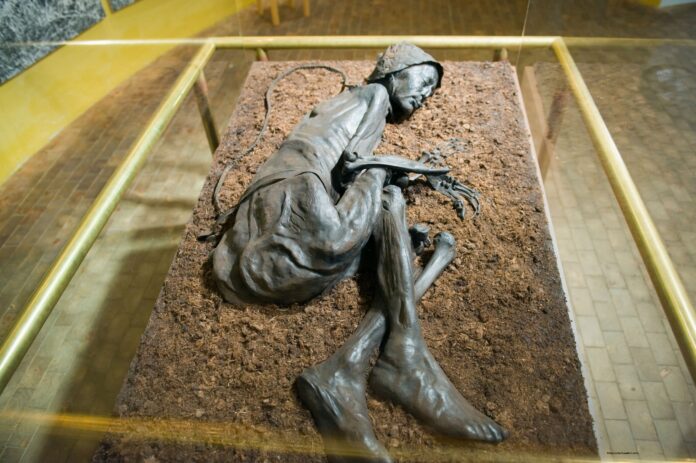Bog bodies are naturally mummified bodies found in peat bogs, both geographically and chronologically. They are also dated to a variety of historical periods including the second world war.
Danes were sacrificed for the bog
A new study suggests that the bogs of Denmark may have been a place of sacrifice. Archaeologists say the findings of an ancient bog body could shed light on a long-forgotten ritual.
Tollund Man, a bog body from the Iron Age, was found on the Jutland Peninsula in Denmark. He is thought to have been sacrificed in the 400s BC. The body was found with remnants of a flint ax. Although the ax had not yet been polished, the researchers said it was an indication of a human sacrifice.
Another bog body in the country is Koelbjerg Man. He was discovered in the 1940s and is believed to be about 10,000 years old.
The ancient bog body was found near animal bones and a remnant of a flint axe. It is not clear what was sacrificed, but the findings suggest an elaborate effort.
A number of bog bodies have been discovered in Northern Europe, including several from Denmark. These human remains offer a unique glimpse into life in prehistory.
They were proficient in textile production
Most people will never have had the pleasure of experiencing the bogs of Northern England, but it has been a hive of activity for some of the oldest humans known to man. Aside from its utilitarian aspects, the bogs have also been home to a number of impressive achievements. Some of the bog’s more esoteric components were uncovered during archaeological excavations. One example is a beech trunk that was hollowed out to create a beehive. Its contents include lids for protection against hungry honey bees and twig ring-frames for making honeycombs.
A number of smaller scale innovations were also unveiled. In addition to the aforementioned beech trunk, the bogs of Britain are littered with a number of intriguing artifacts. Some of the more impressive ones have been uncovered in a number of different bogs, notably Deskford and Vindumhede. In particular, the bogs of Baronstown West, are home to a plethora of fine specimens.
In fact, some of the bogs of the north are so small that they have only recently been identified. It is believed that the earliest bogs of the British Isles were founded around 4,000 years ago. In the modern era, the bogs of the UK have undergone some changes.
They kept animals for food, wool and leather
If you have a look at some of the bog pots and ceramic bog offerings, you will realise that these are not actually found in northern England. However, there are examples of them in other regions. For example, the Fuglsogaard Mose in Denmark has over 100 bog pots. They are filled with butchered meat, dairy produce, grain and puffballs.
Bog body ornaments have also been found. These are generally decorated with a la Tene motif and were affixed to a plaque or carved onto a rock. They were intended to have a three-dimensional effect on the viewer.
The ‘bog dog’ is a well-known and well-documented phenomenon. These are dachshund-type dogs that were known from Denmark and Germany. In some places, like Dreichsmoor in Germany, you can find a bog dog.
There are also a number of animal bones. These are similar to those found in the Solway Moss deposit. The bones show no signs of cooking or butchery. Some of them have been broken into pieces, suggesting that they were thrown into the bog by accident. Some were found bound to tethering posts. The skulls of horses are also known from the bog at Fuglsogaard Mose.
They were a part of the archaeological imagination
The bog body has emerged as an archaeological curiosity, providing us with a glimpse into life in Iron Age Europe. Its sway over the imagination is undeniable, but there are also practical issues to consider.
The bog is a place of extreme liminality. It is wet and solid, firm but soft. It evokes feelings of repulsion and mystery. But it also seems to hold death in stasis. In the Iron Age people believed bogs were a gateway to the spiritual world. They left elaborate offerings, some of which were preserved in the bog.
In the nineteenth century, popular antiquarianism led to the curation of bog bodies, in addition to more formal burials. There was a heightened interest in human remains, and bog bodies were amongst the first examples of this.
Many of the bog bodies were disabled or deformed. They suffered from malnutrition, and their skeletal features were often distorted or misshapen.
The majority of bog bodies date from the Bronze and Iron Ages. These bodies were mummified and then preserved in chemicals in the bog.


